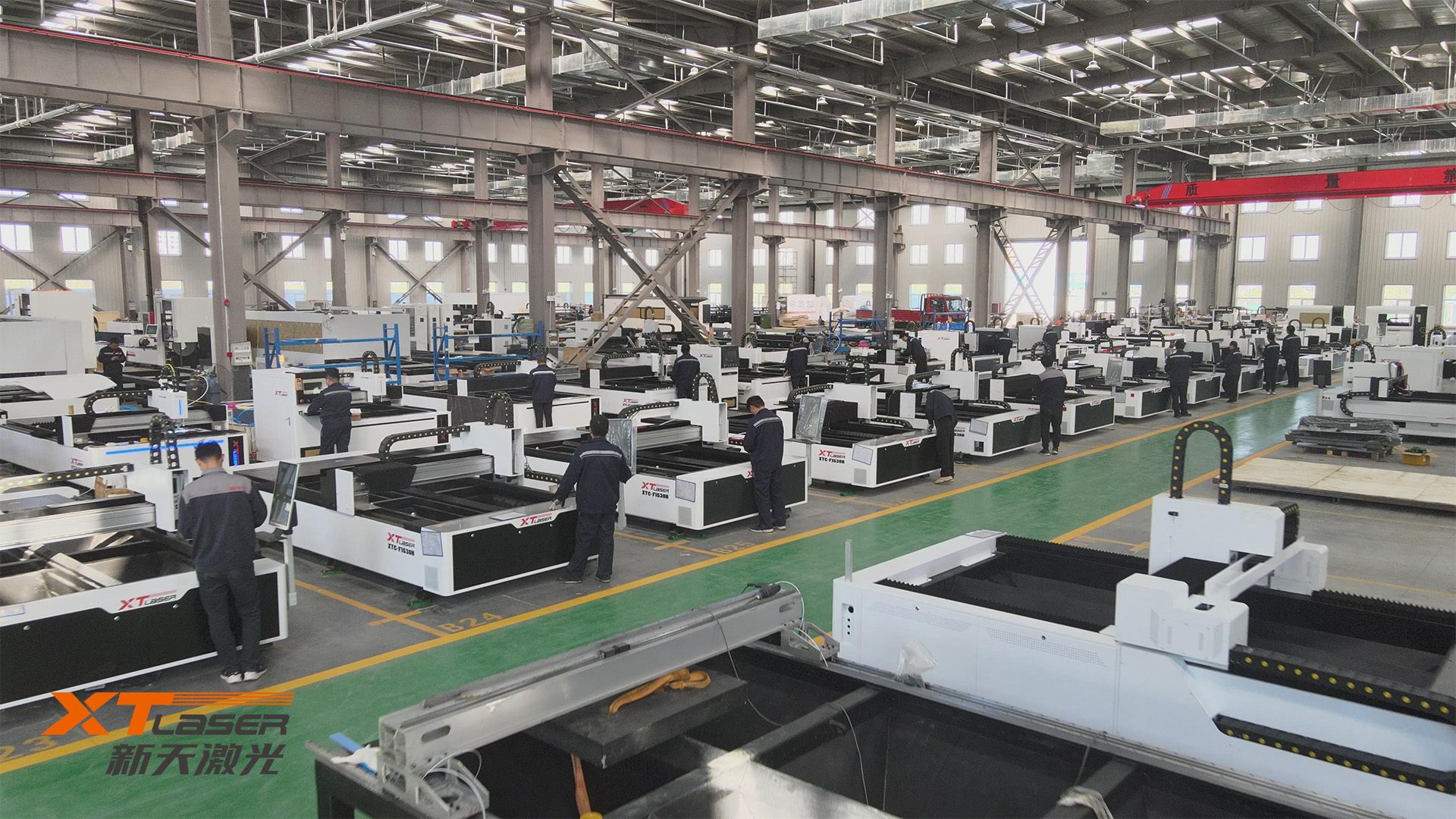Laser cutting machines can replace multiple processes in engineering machinery manufacturing
XT Laser Cutting Machine
The main application of laser cutting machines in the construction machinery industry is sheet metal processing, usually using fiber optic laser cutting machines. Cutting applications mainly include slender workpieces, sheet metal parts with a large number of holes, reserved process notches for sheet metal parts, and the production of sheet metal templates and drilling samples.

Application of laser cutting machine in slender workpieces
In addition, because the heat generated by the laser cutting machine is relatively concentrated during cutting, the Heat-affected zone of the workpiece is small. The engineering machinery industry can effectively control the thermal deformation of the workpiece by using the laser cutting machine to cut the workpiece, especially for slender workpieces that require straightness. When the length of the workpiece reaches more than 5500mm, the straightness of the workpiece can be effectively controlled by using the “micro connection” function of the cutting machine itself.
Application of laser cutting machine in sheet metal parts with more holes
In the engineering machinery industry, laser cutting of circular holes can be used for specific plate thicknesses. As long as the diameter size of the workpiece circular hole is required to be greater than or equal to the corresponding minimum diameter value, and the roughness and diameter size requirements are within the guaranteed range of the cutting machine, laser cutting can be used directly, eliminating the drilling process and improving labor production efficiency. For some workpieces with a large number of holes, the laser dot function is used to determine the position of the holes, saving the time for positioning the holes in the subsequent drilling process and the cost of making drilling templates. This not only improves production efficiency but also improves product accuracy.
Application of Laser Cutting in Reserved Process Notches of Sheet Metal Parts
The process gap reserved for sheet metal parts is also called a crack stop groove or process hole. There are generally three forms of design for process notches in sheet metal production: the first is where two or more bending parts are adjacent, as shown in Figure 1; The second method is to completely bend a certain edge in the length direction, as shown in Figure 2. For the second process gap, the traditional form is shown in Figure 2, leaving a × If a laser cutting machine is used to directly cut a slit with a length of a at this position during the cutting of the rectangular shape of b. For some workpieces with higher requirements, a laser cutting machine can be used to directly reserve the slit. The third form is that when the two ends of the sheet metal part cannot be supported on the lower mold of the bending machine and are in a suspended position during bending, the workpiece will deform. In this case, a laser cutting machine can be used to reserve a cutting seam during workpiece cutting to prevent deformation during bending,
The application of laser cutting in the production of sheet metal templates and drilling templates
In the construction machinery industry, for some sheet metal parts with irregular shapes, in order to improve the accuracy and efficiency of detecting the cutting parts, laser cutting machines are used to make cutting detection templates, such as the support angles on the bulldozer scarifier, the large head plates on the excavator bucket and boom, etc; For some rolled sheet forming workpieces, it is necessary to use templates that match the arc to assist in production and inspection during workpiece production and inspection. In order to improve the accuracy of workpiece production and inspection efficiency, laser cutting and cutting are usually used to produce templates for these workpieces, and the marking function of the laser cutting machine is used to mark the boundaries of the arc and straight edges on the templates, such as the arc plate of a bulldozer The bending of the excavator’s stick and boom, as well as the digging bucket.



